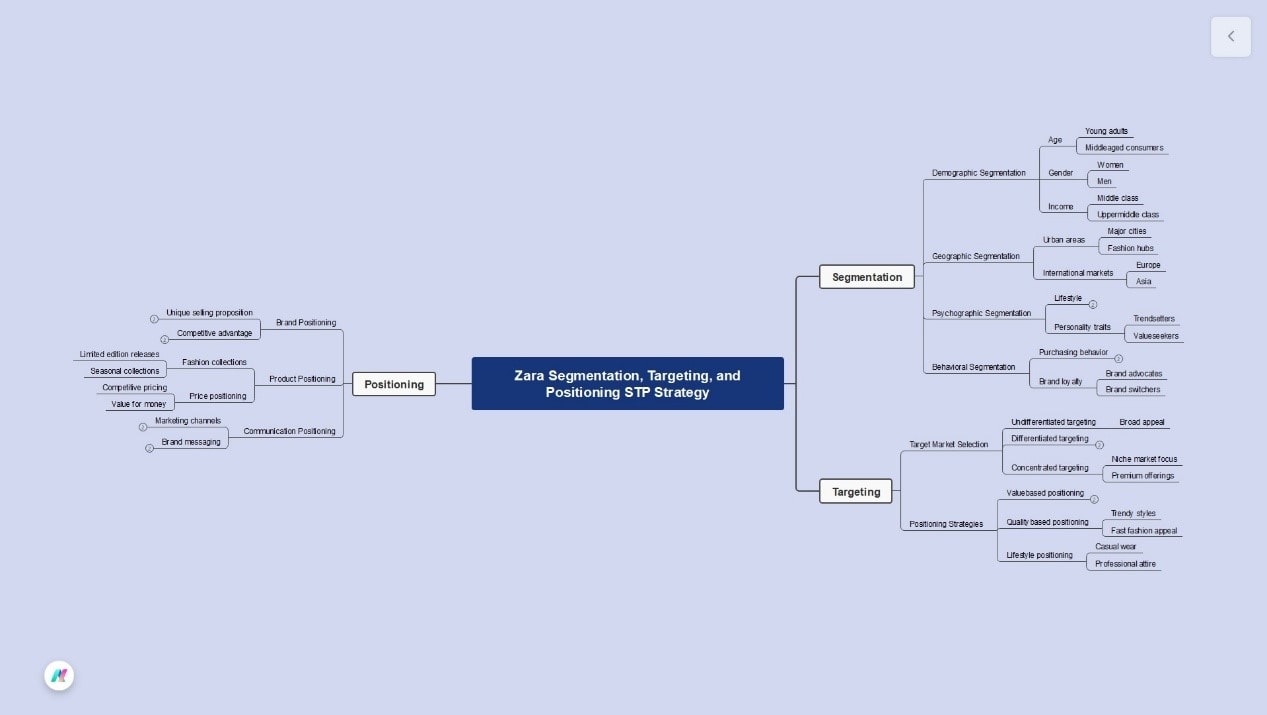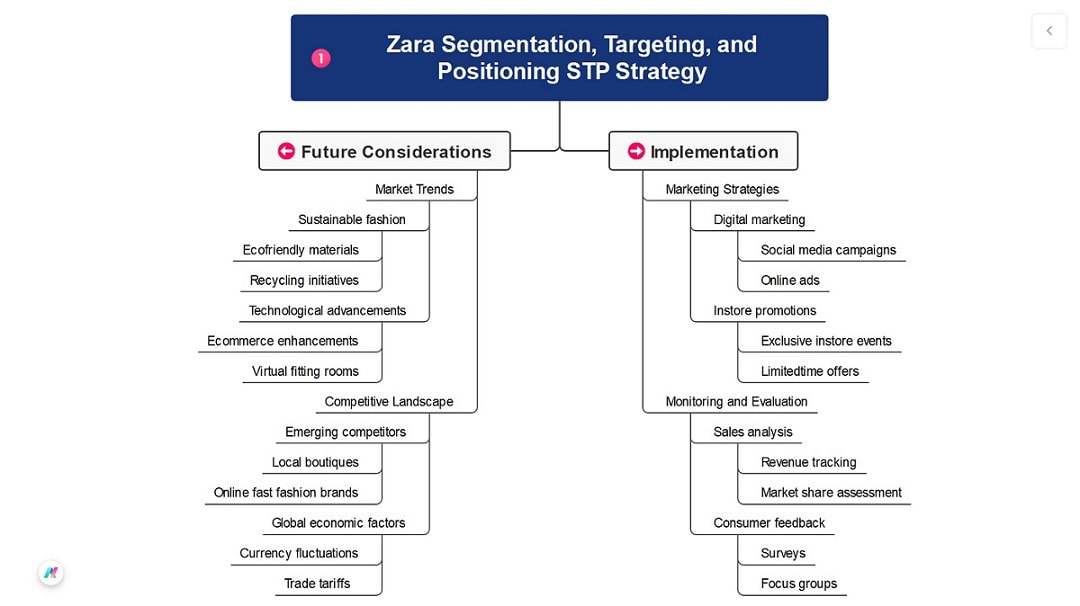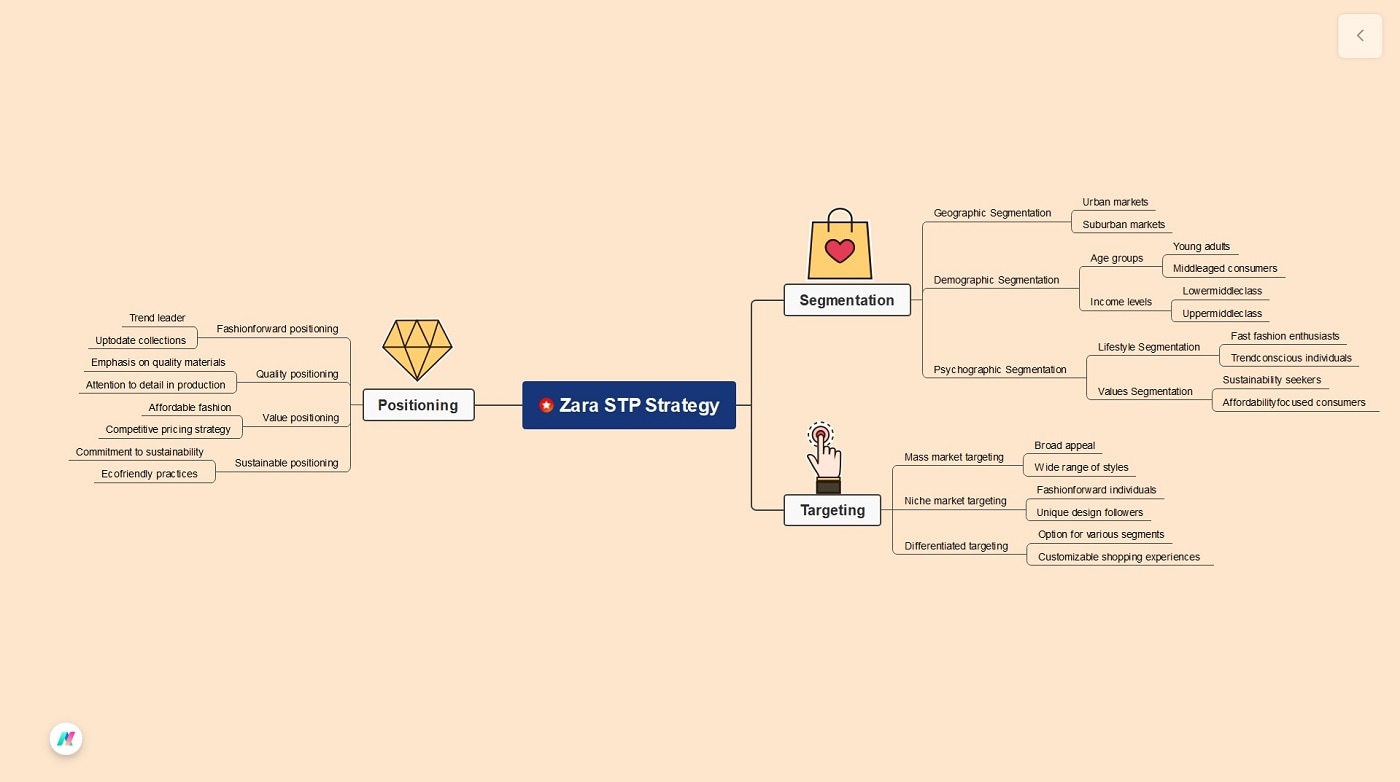Zara is one of the world’s most influential fashion retailers. Known for its “fast fashion” approach, Zara delivers runway-inspired looks at affordable prices, often within weeks. This balance of speed, style, and accessibility has made the brand dominant in the fashion industry.
The backbone of Zara’s success lies in its marketing strategy. It uses the STP framework: segmentation, targeting, and positioning. Zara identifies customer groups and defines its target market. Next, it positions itself as an accessible fashion leader. With this, Zara continues to outpace competitors.
This article explores Zara’s STP strategy step by step. It will also show how to create an STP mind map using Wondershare EdrawMind to visualize your strategy.
In this article
What Is Segmentation, Targeting, and Positioning (STP)?
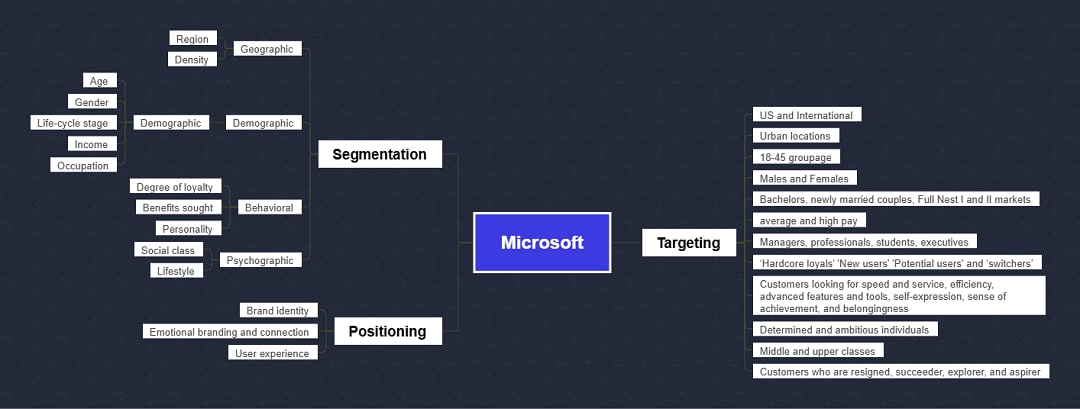
STP is a core marketing framework used to connect businesses with their ideal customers. Segmentation breaks down the market into groups of consumers with shared traits. Targeting selects the most attractive groups to serve. Positioning defines how the brand should be perceived by those customers.
For fashion brands like Zara, STP ensures that products and campaigns target the right audience. It guides decisions about design, pricing, store layout, and communication. Done well, STP makes a brand feel tailored to its customers’ needs.
Company Overview of Zara
| Name | Systerm | Price | Lorem Ipsum |
| Aspect | Information | Founded | 1974 (Spain) |
| Headquarters | Arteixo, Galicia, Spain | Annual Revenue | €25.6 Billion (2023) |
| Number of Stores | 1,900+ in 90+ countries (2024) | Market Cap | Over $200 Billion (2024) |
| Key Products | Clothing, footwear, accessories | Business Model | Fast fashion, with new designs introduced every 2–3 weeks |
| Official Website | https://www.zara.com |
Zara Segmentation, Targeting, and Positioning (STP) Strategy
This article will create an STP mind map in Wondershare EdrawMind to visualize how Zara approaches its market. This helps simplify the breakdown of each step while showing the flow of the strategy.
Zara Segmentation Strategy
Zara divides its market through demographics and psychographics. It focuses on young adults between 18 and 35 years old living in urban areas. These buyers are often students, professionals, or fashion-forward individuals with moderate disposable income.
Zara appeals to those who want to stay trendy without paying high-end luxury prices. This group values fashion that feels modern, accessible, and aspirational. This keeps them visiting Zara stores frequently.
Zara Targeting Strategy
From its segmentation, Zara defines its main target market as middle-income men and women. These target shoppers often want the latest styles at affordable prices. They look for frequent variety and quick access to new fashion.
By focusing on this group, Zara drives higher store visits and customer loyalty. While luxury brands highlight exclusivity, Zara emphasizes accessibility. It delivers a premium shopping atmosphere through sleek store layouts and curated collections.
Zara Positioning Strategy
Zara positions itself as a leader in fast fashion. It offers affordable, stylish designs that are always current. Its brand promise relies on speed. It turns runway inspiration into in-store products within weeks. This creates urgency and excitement.
Instead of traditional advertising, Zara leans on store design and high product turnover. It also relies on word-of-mouth to build its brand identity. This unique positioning sets Zara apart in the global retail market. It also reinforces its fast-fashion dominance.
Case Study: STP Analysis of Zara
Zara’s STP framework is evident in how it approaches millennials and Gen Z. These groups value fashion that is trendy yet affordable. Zara responds with high-frequency product drops tailored to current styles. This balance allows Zara to capture customers seeking both accessibility and modernity.
In positioning, Zara creates a sense of exclusivity not through high pricing but by limiting stock. The brand refreshes collections often. Shoppers know that hesitation could mean missing out. This encourages quick decisions and frequent visits to stores and the online platform.
The STP strategy is supported by marketing initiatives. Digital campaigns across social media and online ads help Zara engage younger audiences. Meanwhile, in-store promotions like exclusive events and limited-time offers keep physical shopping relevant. Monitoring comes through sales analysis and revenue tracking. There’s also customer feedback from surveys and focus groups.
Looking forward, Zara must adapt to trends like sustainable fashion with eco-friendly materials and recycling programs. The brand should also embrace e-commerce tools such as virtual fitting rooms. Staying alert to new fast-fashion competitors and global economic shifts ensures long-term relevance.
How To Make a STP Mind Map for a Company
Creating an STP mind map helps businesses understand how to define their audience. You can identify primary targets and position your brand effectively.
For Zara, this approach highlights how the company connects with millennials and Gen Z through fast-fashion strategies. By visualizing STP, businesses can spot opportunities and refine tactics. They can also ensure consistent communication across markets.
Use a Segmentation, Targeting, and Positioning Mind Map Maker
EdrawMind is a professional brainstorming and visualization tool. The platform simplifies strategy planning with quick and easy diagram creation. With its intuitive features, teams can map out Zara’s segmentation, targeting, and positioning in a clear, engaging way. Here are EdrawMind’s key features:
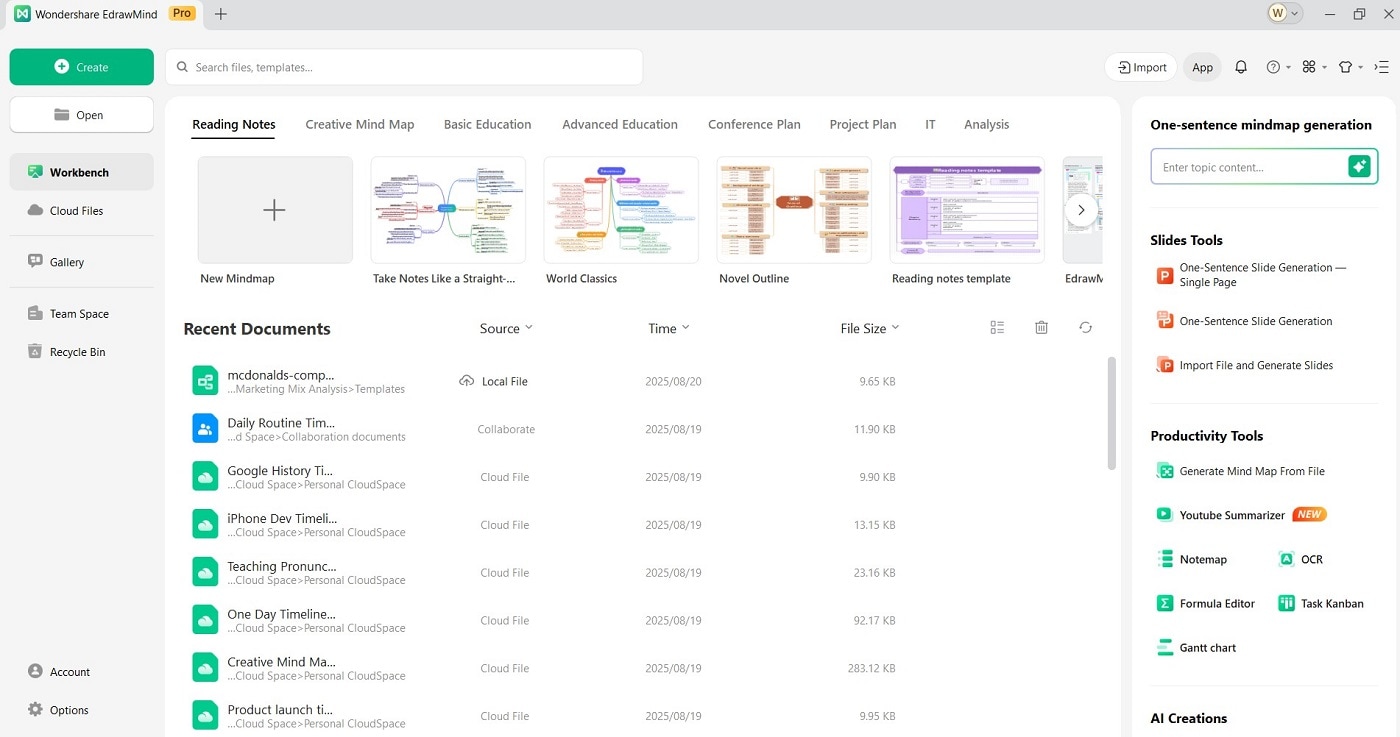
- Pre-Made Templates
EdrawMind provides STP templates ready to use. Instead of starting from scratch, you can quickly customize an existing framework. This saves you time while maintaining professional quality.
- AI Assistance
The built-in AI can generate ideas and structure your STP map. For example, Zara’s segmentation can all be organized automatically.
- Collaboration Tools
Real-time collaboration allows teams to refine Zara’s STP strategy together. Sharing feedback directly in the mind map ensures alignment across departments.
- Cross-Platform Access
EdrawMind runs on desktop, mobile, and web, so you can update or review the STP mind map anywhere.
- Export Options
Once complete, export the Zara STP mind map into PDF, Word, PowerPoint, or image formats. This makes it ideal for team workshops or client presentations.
Steps To Create a Zara STP Mind Map
Follow the steps to create an STP mind map with EdrawMind:
Step 1: Download and Install EdrawMind.
Next, log in or register for a Wondershare account. Start a new project by choosing Local MindMap.
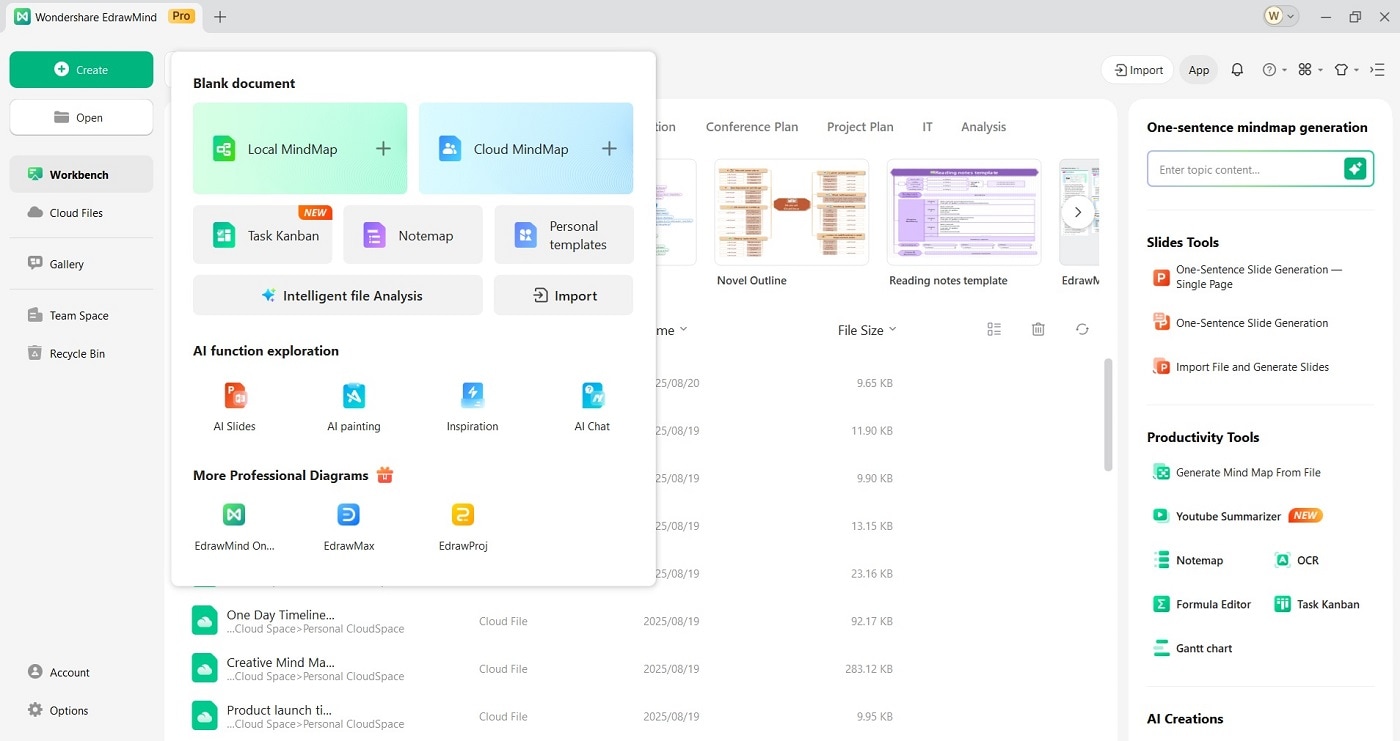
Step 2: Define your objective.
Zara's goal is to analyze its segmentation, targeting, and positioning strategies within the global fast-fashion market.
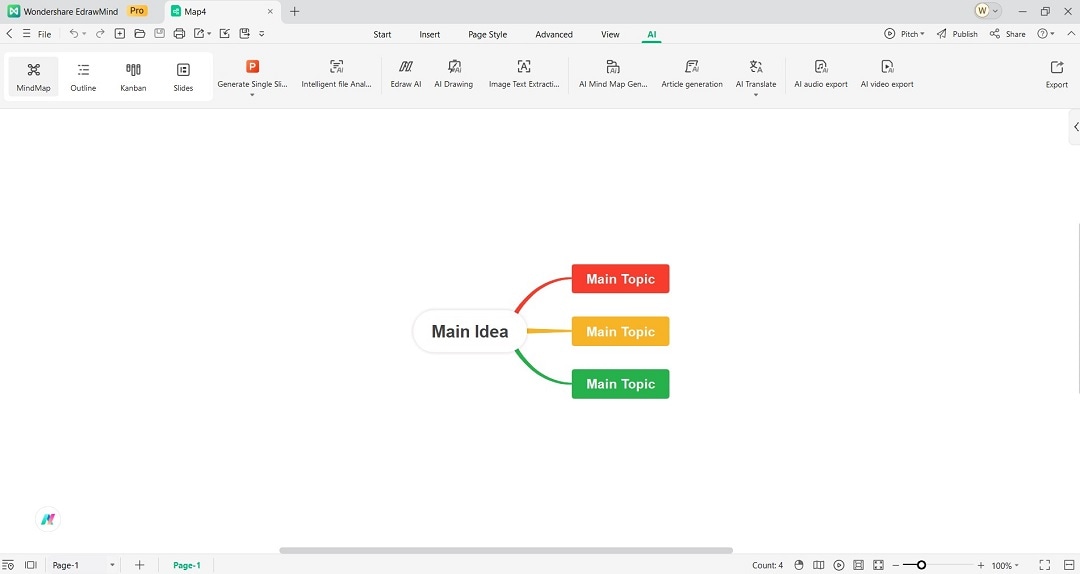
Step 3: Add Zara STP Strategy as the central node.
Create three branches for Segmentation, Targeting, and Positioning.
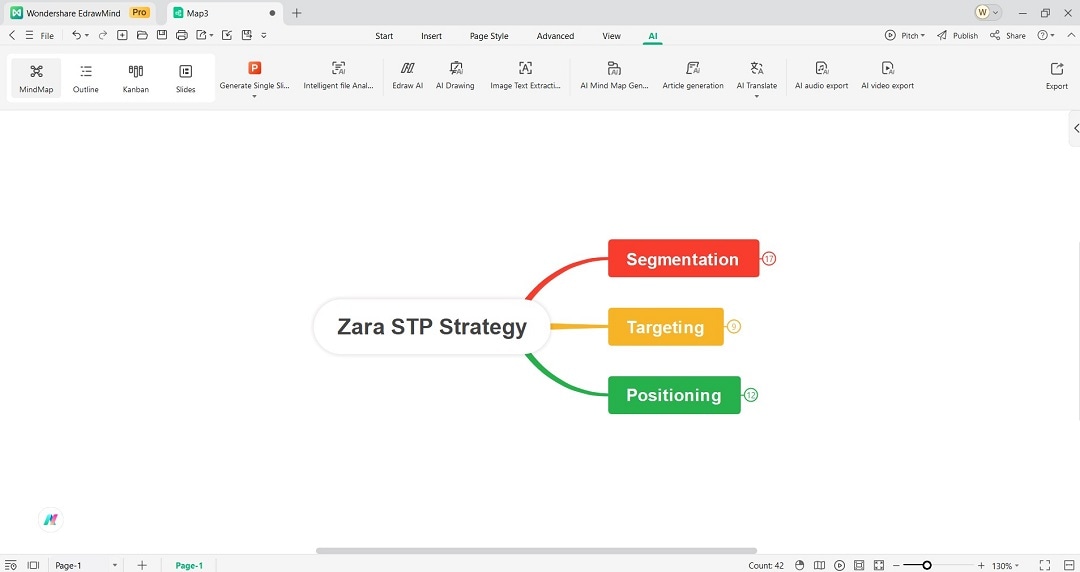
Step 4: Expand with details.
Under Segmentation, add demographics. Under Targeting, add middle-income men and women. Under Positioning, add fast-fashion leader.
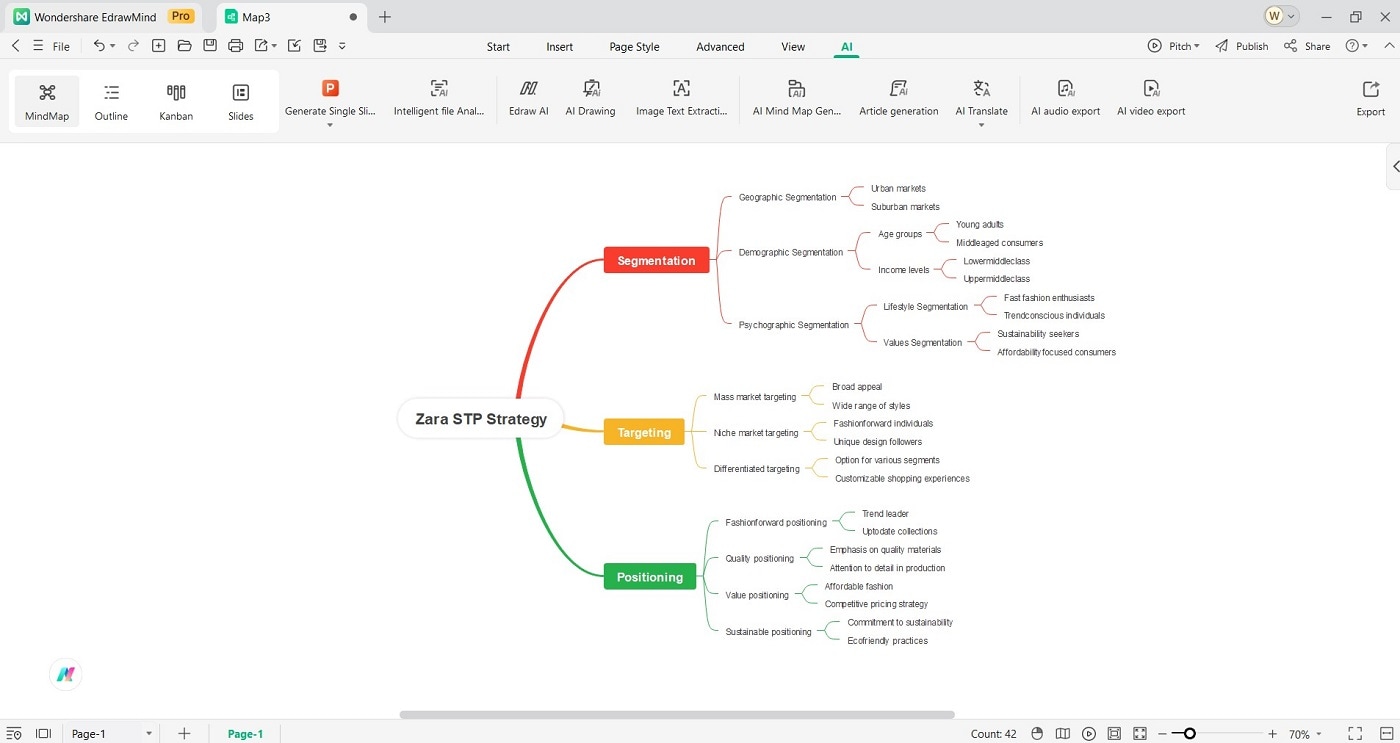
Step 5: Personalize the mind map.
Use the right-side panel to adjust layout and themes. Add icons, like a shopping bag for Segmentation or a lightning bolt for fast-fashion speed.
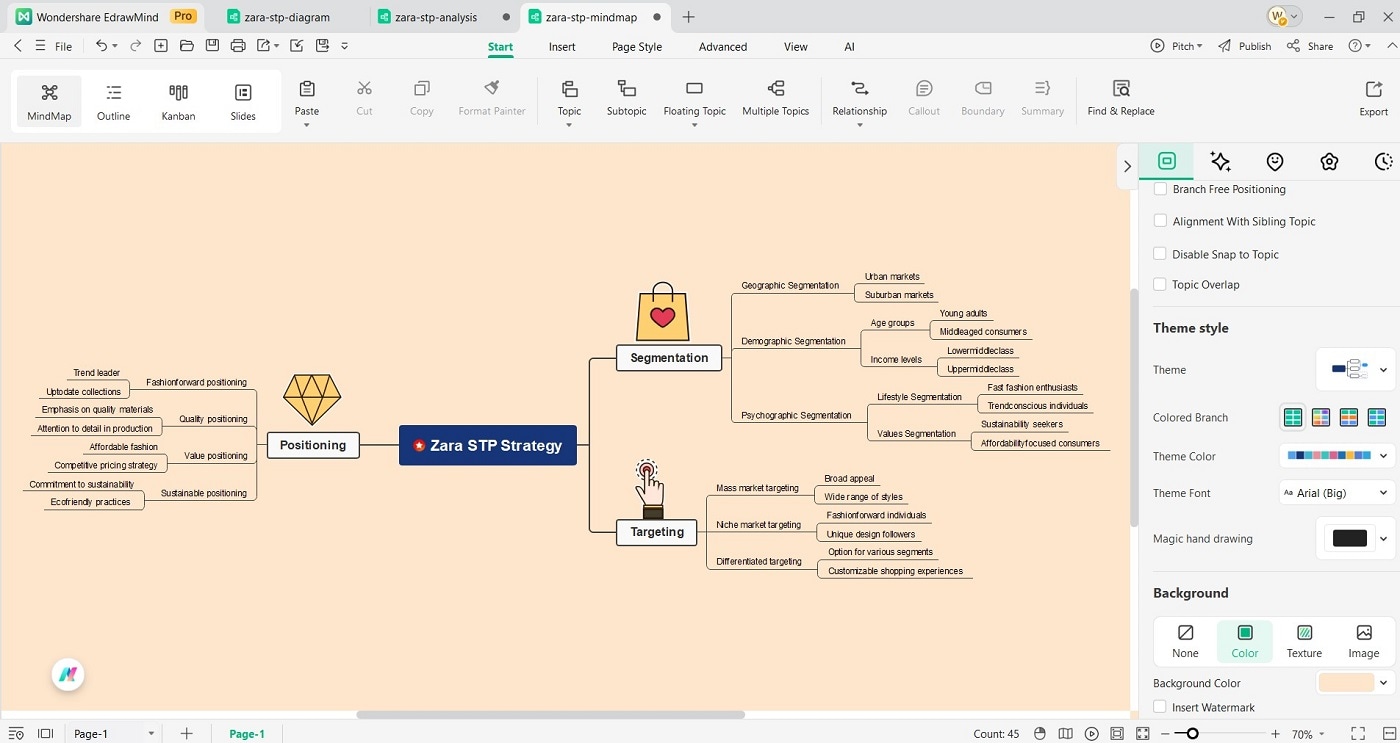
Step 6: Finalize and share.
Export the STP mind map for team meetings, marketing strategy reviews, or classroom presentations.
Tips To Make an STP Mind Map
Follow these steps when creating an STP diagram:
- Understand Your Customer Base
Dive deep into demographics and psychographics to create meaningful segmentation. Zara’s success comes from knowing its customers want trendy, affordable clothing.
- Target With Precision
Focus on the most profitable and loyal audience segments. Zara emphasizes young, urban, and fashion-forward consumers.
- Refine Positioning Continuously
Positioning should adapt to cultural and market shifts. Zara frequently updates its strategy to highlight sustainability and digital innovation.
- Leverage Technology
Use EdrawMind’s AI and data integration to streamline your STP analysis and ensure clarity.
- Review and Adjust Regularly
Markets change quickly. Keep updating your STP mind map so strategies remain fresh and effective.
Key Takeaways
Zara has built its fast-fashion empire by carefully segmenting its audience. The brand targets urban millennials and Gen Z. Zara also positions itself as a brand that offers trend-focused clothing at affordable prices.
An STP mind map makes this strategy easier to understand, refine, and apply. EdrawMind’s ready-made templates and collaboration tools make creating such maps fast and simple. What’s more, they’re visually engaging. You can create diagrams for business strategy, school projects, or professional presentations.
FAQ
-
Can Zara’s STP strategy change over time?
Yes. Zara regularly adjusts its segmentation, targeting, and positioning to remain competitive. For example, it has begun to add sustainability as part of its positioning to meet rising consumer expectations.These changes allow Zara to stay aligned with global fashion trends and respond effectively to market pressures, ensuring continued relevance among millennials, Gen Z, and emerging audiences.
-
Why is positioning important for Zara’s fast-fashion model?
Positioning defines how Zara differentiates itself from competitors. Zara positions itself as trendy and affordable while keeping collections limited. The brand creates urgency and exclusivity.This strategy ensures frequent store visits and rapid buying decisions. Effective positioning also helps Zara maintain its leadership in the fast-fashion industry despite heavy competition.
-
How can businesses use Zara’s STP as a model?
Companies can replicate Zara’s STP by segmenting their audience clearly. Find a profitable target group, and position your brand with a unique, consistent message. Zara shows that speed and relevance drive loyalty.For smaller businesses, this could mean targeting niche groups. Offer tailored products and position your brand as specialists. The key is to stay agile and customer-focused, just as Zara does.




